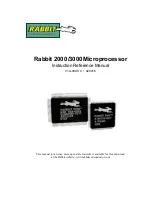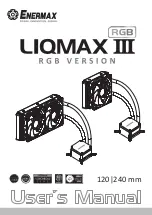
Chapter 6
Digital I/O
6-6
ni.com
Programmable Power-Up States on USB-6212/6216 Devices
At system start
u
p and reset, the hardware sets all PFI and DIO lines to
high-impedance inp
u
ts by defa
u
lt. The DAQ device does not drive the
signal high or low. Each line has a weak p
u
ll-down resistor connected to it,
as described in the
NI USB-621x Specifications
.
NI-DAQmx s
u
pports programmable power-
u
p states for PFI and DIO lines.
Software can program any val
u
e at power
u
p to the P0, P1, or P2 lines. The
PFI and DIO lines can be set as:
•
A high-impedance inp
u
t with a weak p
u
ll-down resistor (defa
u
lt)
•
An o
u
tp
u
t driving a 0
•
An o
u
tp
u
t driving a 1
Refer to the
NI-DAQmx Help
or the
LabVIEW Help
in version 8.0 or later
for more information abo
u
t setting power-
u
p states in NI-DAQmx or MAX.
Increasing Current Drive on USB-6212/6216 Devices
The total internal c
u
rrent limit for digital o
u
tp
u
ts and power drawn from the
+5 V terminals is 50 mA. Yo
u
can increase this internal c
u
rrent limit by
s
u
pplying an ex5 V s
u
pply. Refer to the
section of Chapter 3,
.
Connecting Digital I/O Signals on USB-6212/6216 Devices
The DIO signals, P0.<0..15>, P1.<0..7>, and P2.<0..7> are referenced to
D GND. Yo
u
can individ
u
ally program each line as an inp
u
t or o
u
tp
u
t.
Fig
u
re 6-4 shows P0.<0..3> config
u
red for digital inp
u
t and P1.<0..3>
config
u
red for digital o
u
tp
u
t. Digital inp
u
t applications incl
u
de receiving
TTL signals and sensing external device states, s
u
ch as the state of the
switch shown in the fig
u
re. Digital o
u
tp
u
t applications incl
u
de sending
TTL signals and driving external devices, s
u
ch as the LED shown in the
fig
u
re.















































